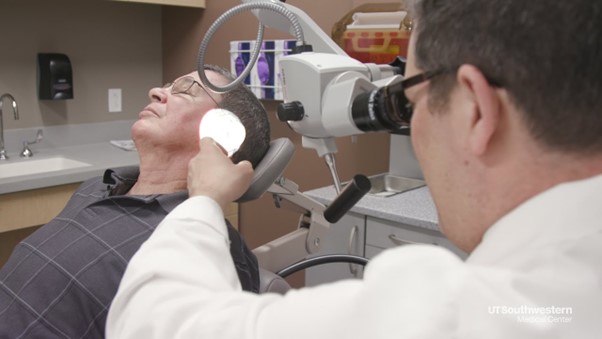
Vertigo and Balance Disorders: Understanding the Causes and Seeking Treatment
Vertigo and balance disorders can cause severe dizziness, lightheadedness, and unsteadiness. These symptoms can have a major impact on your day-to-day life, making it difficult to focus or move around with ease.
It’s important to understand the different types of vertigo and balance disorders and the various causes so you can seek proper treatment.
Common Causes of Vertigo and Balance Disorders
Benign paroxysmal positional vertigo (BPPV)
Benign paroxysmal positional vertigo, or BPPV, is a disorienting condition caused by calcium crystals in the inner ear becoming dislodged and entering one of two intertwining canals.
Those affected may experience episodes of intense dizziness and spinning sensation – commonly known as vertigo – that are fortunately treatable through physical therapy exercises designed to reduce symptoms over time.
Meniere's Disease
Meniere’s Disease is an insidious condition that affects the inner ear, forcing it to accumulate a surplus of fluid. This can lead to debilitating symptoms such as vertigo, tinnitus, hearing loss, and feelings of fullness within the affected ears – all without any definitive cure.
Thankfully though treatments exist which can alleviate discomfort associated with these common maladies – including diuretics, steroid injections, and surgical measures.
Vestibular neuritis
Vestibular neuritis occurs due to inflammation of a nerve known as the vestibular nerve, causing symptoms to include sudden onset vertigo, imbalance, and ataxia, which are typically worse while sitting or standing.
Vestibular neuritis treatment usually requires the administration of steroids.
Labyrinthitis
Labyrinthitis is a condition characterized by inflammation or infection of the inner ear labyrinth, resulting in symptoms of hearing loss, ringing in the ear, and vertigo.
Ear drops, antibiotics, anti-inflammatory medication, and physical therapy exercises can help alleviate the symptoms of this condition.
Acoustic Neuroma
Acoustic neuroma is a benign tumor on the nerve that connects the ear to the brain. Although it is not necessarily common, it can cause vertigo, balance disorders, and hearing loss symptoms in some people.

Treatment may involve monitorization, radiation, or surgical removal.
Diagnosing Vertigo and Balance Disorders
Your doctor can diagnose vertigo or balance disorder by performing physical and neurological examinations to determine the cause of your symptoms.
They may also order imaging tests such as an MRI or CT scan to rule out any underlying medical conditions.
Treatment Options for Vertigo and Balance Disorders
The treatment plan for vertigo or balance disorder will vary depending on the cause.
Vestibular Rehabilitation Therapy (VRT)
VRT is a form of physical therapy that helps retrain the vestibular system to deal with balance disorders. It includes exercises to improve balance, eye movements, and other functions controlled by the vestibular system.
VRT can improve symptoms and reduce issues related to vertigo, motion sickness, and other vestibular disorders.
Medications
Several medications are prescribed to manage vertigo symptoms, mainly for its acute management. These medications help to reduce nausea, vomiting, and other symptoms commonly associated with vertigo.
The drugs range from sedatives to antihistamines, to antiemetics, each with its unique way of managing vertigo.
Home exercises
People with vertigo symptoms can also benefit from certain recumbent exercises or therapeutic Canalith repositioning maneuvers like the Semont and Epley maneuvers to manage their symptoms.

Home exercises like deep head turns are also recommended for people with chronic labyrinthine disorders.
Surgery
Surgery is considered for severe vestibular disorders or if other treatments have not been successful, and the symptoms persist. The surgery involves cutting or damaging the part or a portion of the inner ear.
It might also involve replacing any damaged vestibular apparatus. Surgery can take weeks to recover and the patient may remain with some balance difficulties.
Lifestyle Changes
Some key lifestyle changes that can help improve vertigo or balance include dietary modifications, cutting down on caffeine/alcohol, avoiding large meals before bed, and getting enough sleep.
Restricting salt intake can help manage Meniere’s disease. Smoking cessation and stress-reducing techniques like yoga and meditation can also help balance issues in some individuals.
Exercise, particularly the type of exercise that involves working on balance and performing lots of spinal rotations, may benefit people as well.
Living with a Long Term Disorder
Living with a long-term disorder can present its own unique set of challenges. It is important to stay informed about your condition, talk to your doctor regularly, and make lifestyle changes where necessary.
Eating a balanced diet, exercising regularly, and learning relaxation techniques can help improve your overall well-being.
Conclusion
Vertigo and balance disorders can be debilitating conditions that make it difficult to go about everyday life. It is important to understand the different types of vertigo and balance disorders and the various causes so you can seek proper treatment.
With the right care, it is possible to manage these conditions and lead a healthy life.
Remember to consult your doctor if you are experiencing any symptoms so they can create a personalized treatment plan for you.
Learn more.